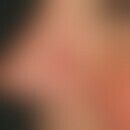DefinitionThis section has been translated automatically.
Pharmacodynamics (Effect)This section has been translated automatically.
You might also be interested in
Field of application/useThis section has been translated automatically.
IncompatibilityThis section has been translated automatically.
- Light and oxygen lead to the formation of peroxide, which is further converted into aldehydes.
- Phenolic substances are chemically bound, partial inactivation of the active ingredient, precipitation at higher concentrations.
- Anthrazole, dithranol, oleum thyme, oxytetracycline-HCl, pyrogallol, resorcinol, silver nitrate, sulfonamides and tannin lead to discoloration.
- Aluminium chloride and anthrarobin may lead to solidification.
- Bacitracin and penicillin are inactivated.
- Mercury and silver salts are reduced.
- Liq. alum. acet. and terpine hydrate lead to liquefaction.
TablesThis section has been translated automatically.
Compatibility of drugs in macrogol ointment (polyethylene glycol ointment)
Acridine flavinium chloride 2% |
dexamethasone 0,1% |
neomycin sulfate 0,5%. |
allantoin 0,5% |
Dexpanthenol 5% |
Nicotinic acid benzyl ester 3%. |
Ammonium bituminosulphonate 10 |
Dimetine maleate 1% |
nitrofurazone 0,2% |
Amphotericin B 3% |
Dimeticone 10% |
Nystatin 100 000 IU/g |
azulene 0,2% |
Diphenhydramine HCl 2% |
Oleum Pini 1,5 |
Bamipine HCl 2% |
Erythromycin 2% |
Pheniramine hydrogen maleate 1,25% |
benzalkonium chloride 0,5%. |
Ethacridine lactate 1% |
Polidocanol 3% |
Benzocaine 10% |
Eucalyptol 10% |
Polyvidon iodine 10% |
Benzoic acid 5% |
Gentamicin sulphate 0,2 |
Procaine HCl 2% |
Benzoyl peroxide 5% |
Urea 10% Urea |
Sulphur 5% |
Benzyl alcohol 10% |
Hydrarg. sulf. rubr. 1% |
Sorbic acid 0,1% of |
betamethasone-17-valerate 0,1% |
hydrocortisone 1% |
Sulphadiazine 5% |
Bufexamac 5% |
hydroxyquinoline sulfate 0,5%. |
sulfisomidine 5% |
calcium chloride 5% |
potassium iodide 3,5%. |
tetracaine HCl 0,5 |
cetylpyridinium chloride 0,5 |
Camphor 5% |
Tetracycline HCl 1% |
Chloramine T 5% |
Cod liver oil 10% |
Tinctura Myrrh 3% |
Chloramphenicol 1% |
Liq. Carb. deterg. 10% |
tretinoin 0.1% |
Chlorophenoxamine-HCl 1,5% Chlorophenoxamine-HCl 1,5% Chlorophenoxamine |
Menthol 5% |
triamcinolone acetonide 0,1 |
Chlortetracycline HCl 3% |
Merbromine 2% |
tyrothricin 0,1% |
Chrysarobin 5% |
Methyl salicylate 5% |
Undecylenic acid 5% |
Clioquinol 5% |
Lactic acid 5 |
Zinc oxide 10 |
clotrimazole 1% |
Sodium chloride 10 |
Zinc undecylenate 5% |




